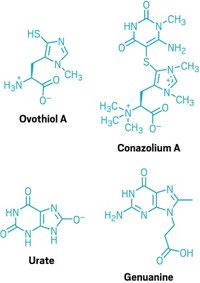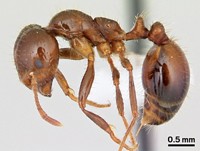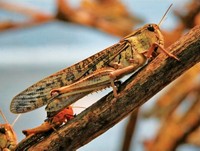Advertisement
Grab your lab coat. Let's get started
Welcome!
Welcome!
Create an account below to get 6 C&EN articles per month, receive newsletters and more - all free.
It seems this is your first time logging in online. Please enter the following information to continue.
As an ACS member you automatically get access to this site. All we need is few more details to create your reading experience.
Not you? Sign in with a different account.
Not you? Sign in with a different account.
ERROR 1
ERROR 1
ERROR 2
ERROR 2
ERROR 2
ERROR 2
ERROR 2
Password and Confirm password must match.
If you have an ACS member number, please enter it here so we can link this account to your membership. (optional)
ERROR 2
ACS values your privacy. By submitting your information, you are gaining access to C&EN and subscribing to our weekly newsletter. We use the information you provide to make your reading experience better, and we will never sell your data to third party members.
Biological Chemistry
Birds and Beetles: a Toxic Trail
Insects could be the dietary source of neurotoxins in certain birds and frogs
by Bethany Halford
November 8, 2004
| A version of this story appeared in
Volume 82, Issue 45
NATURAL PRODUCTS

Certain colombian poison-dart frogs and New Guinea songbirds harbor poisonous batrachotoxins that help protect them against predators. For years, scientists have suspected that the creatures were getting the neurotoxic steroidal alkaloids from a dietary source, but that source has remained mysterious. Until now.
John P. Dumbacher, of the California Academy of Sciences, in San Francisco, and colleagues report that the little-studied family of Melyridae beetles contain batrachotoxins in high concentrations [Proc. Natl. Acad. Sci. USA, 101, 15857 (2004)]. The tiny beetles, which are a little larger than a grain of rice, fall within the size range of other insects that the poisonous frogs and birds are known to snack on. Also, the cosmopolitan insects or their relatives are known to live in the same regions of Colombia and New Guinea as the frogs and birds.
The team drew a direct link between the bird and the beetle when they identified a member of the melyrid family in the stomach of a Pitohui bird, which is also known to harbor batrachotoxins. Restrictions on fieldwork in Colombia prevent the researchers from making a similar connection for the poisonous Phyllobates frogs, but Dumbacher says the toxins' concentrations are sufficiently high that they may be able to detect the alkaloids in Colombian Melyridae specimens that are part of old insect collections.
The researchers haven't yet established how the beetle gets the toxins. Beetles don't typically biosynthesize steroidal structures like the batrachotoxin skeleton. Dumbacher speculates that beetles could pick up batrachotoxin or its building blocks from plants or arthropods in its diet. However, the scientists have not ruled out other possible sources of the toxin.






Join the conversation
Contact the reporter
Submit a Letter to the Editor for publication
Engage with us on Twitter